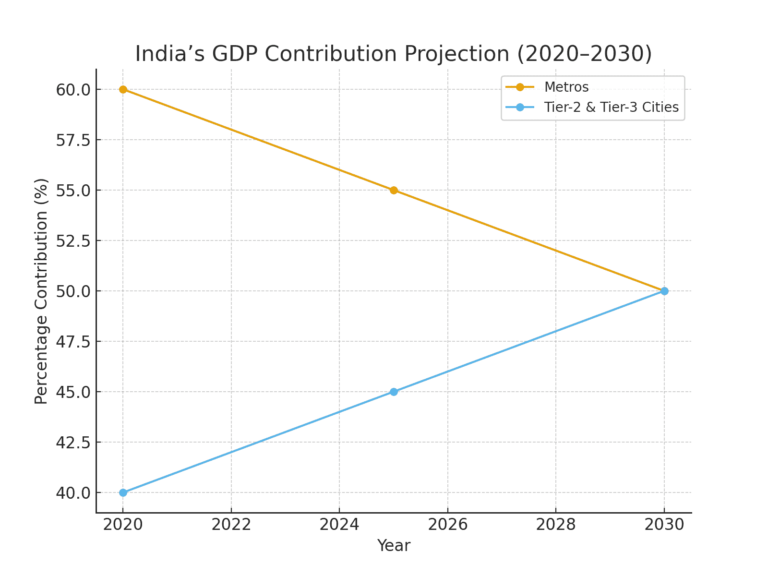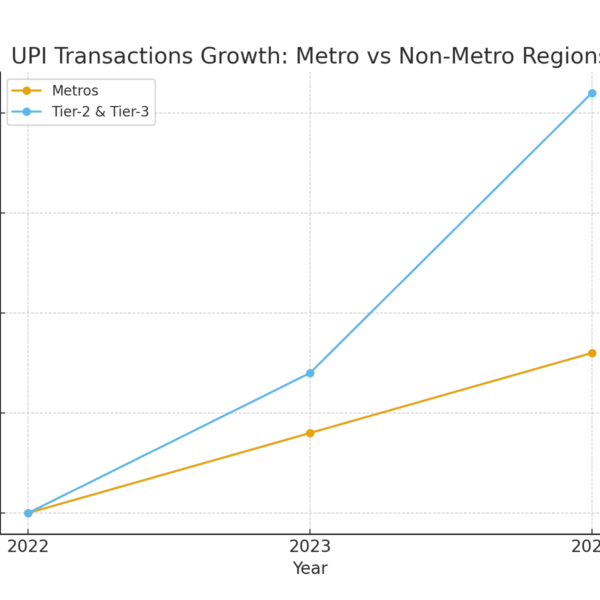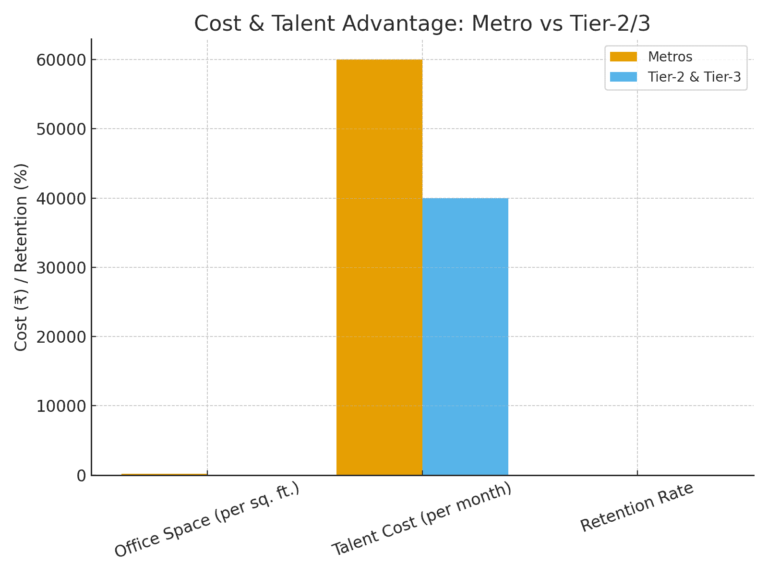For decades, India’s economic story has been told through its metro cities—Mumbai, Delhi, Bengaluru, Chennai. These megacities have powered industries, startups, and consumer spending. But a quiet revolution is now underway.
The next chapter of India’s growth is being written outside the metros, in Tier-2 and Tier-3 cities. From Lucknow to Surat, Indore to Coimbatore, these cities are no longer just satellite hubs. They are emerging as economic powerhouses with rising incomes, ambitious entrepreneurs, and millions of digital-first consumers.
For business owners, this shift is not just interesting—it’s a once-in-a-generation opportunity.
The Economic Shift: Beyond the Metro Bubble
According to McKinsey, by 2030 India will be a $4.2 trillion economy, and half of that growth will come from Tier-2 and Tier-3 cities.
This is not just theory—it’s already happening. Internet penetration, financial inclusion, and infrastructure investments have reshaped the way smaller cities consume, trade, and grow.

The trend is clear: metros are still important, but Tier-2 and Tier-3 cities are catching up fast, contributing equally to the economy.
Why Tier-2 & Tier-3 Cities Are Growing So Fast
1. Rising Disposable Incomes
Families in smaller cities now enjoy higher disposable incomes, driven by industrial growth, new job opportunities, and global remittances.
- Household income in Tier-2 cities grew at 14% CAGR, compared to 8% in metros (NielsenIQ, 2023).
- Cities like Surat, Indore, and Lucknow now have more high-net-worth individuals (HNIs) per capita than some larger metros.
This means more spending power and a booming aspirational middle class eager for premium products and services.
2. The Digital Consumer Revolution
Affordable internet and smartphones have transformed smaller cities into digital-first markets.
- 70% of new e-commerce users in 2023 came from Tier-2 & Tier-3 cities (RedSeer).
- UPI transactions outside metros grew by 118% YoY in 2024 (NPCI).

The data shows how non-metro India has leapfrogged in adopting digital payments, outpacing even the big cities.
3. Startup & Investment Ecosystem Expands Beyond Metros
Startups are no longer just a Bengaluru or Gurgaon story.
- 50% of new startups registered in 2024 came from non-metro cities (MCA).
- Cities like Jaipur, Kochi, Indore, and Bhubaneswar are fast becoming regional startup hubs with government support and private investments.
Case study: Indore, India’s top-ranked smart city, has become a magnet for IT firms and BPOs looking for cost-effective and talent-rich bases.
4. Talent Availability with Cost Advantage
Hiring in Tier-2 cities gives companies 30–40% cost savings compared to metros. Add to that a higher retention rate, as professionals prefer working close to home.

For businesses, this translates into lower expenses and more loyal employees—a winning combination.
What This Means for Business Owners
For entrepreneurs, SMEs, and even large corporates, the rise of Tier-2 & Tier-3 cities is a wake-up call. Here’s how to tap into it:
1. Localize Your Marketing
Speak the language—literally. Campaigns in regional languages and with local cultural insights perform far better than generic ads.
2. Expand Your Reach
Distribution networks, local partnerships, and micro-warehousing in these cities can help you serve the demand faster.
3. Leverage Verified Data
Access to verified MSME owners, professionals, and HNIs in Tier-2 & Tier-3 cities allows for precision targeting and smarter campaigns. This is where platforms like EMarket Zone empower businesses to connect with the right audience.
The Road Ahead
India’s future growth map is no longer just about Delhi or Mumbai. It’s about 400+ emerging cities that are shaping the next big consumer wave.
The businesses that recognize this shift early will enjoy:
- Lower competition
- Stronger brand loyalty
- Faster adoption by aspirational customers
The metro story was yesterday. The Tier-2 & Tier-3 story is today—and tomorrow.
Final Thought
At EMarket Zone, we believe that data is the fuel powering this growth. With accurate, verified datasets, businesses can unlock opportunities in these fast-rising cities and build meaningful connections with customers and partners.
The growth explosion is happening right now. The question is: Will your business be part of it?




Leave a comment